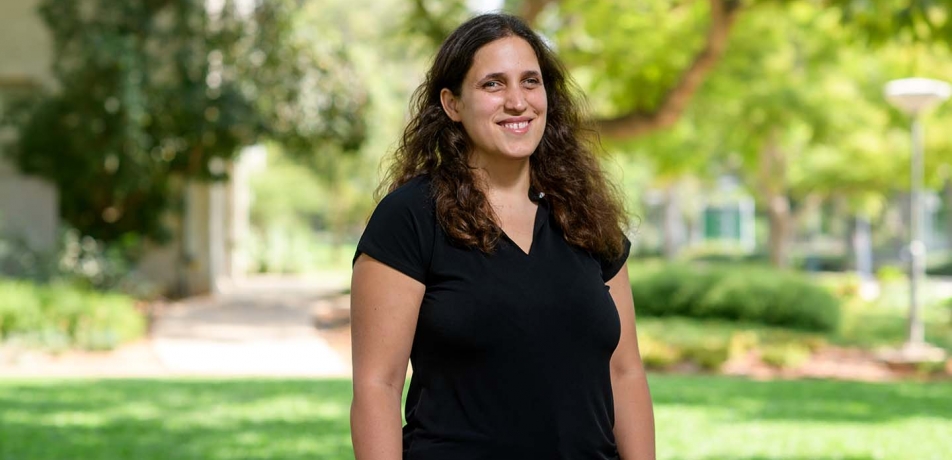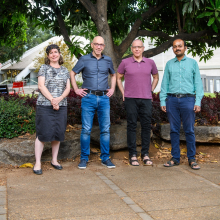Rewiring behavior via the brain
Introducing neurobiologist Dr. Michal Ramot
New scientists

The brain’s resting-state activity may have far greater significance than being mere ‘noise’, as was once believed. Dr. Michal Ramot uses neuroimaging to decipher the meaning and purpose of such spontaneously emerging activation patterns. Her research may lead to novel interventions for individuals suffering from a range of mental illnesses.
One of the chief ways neuroscientists determine whether different regions of the brain are involved in performing a particular task—rhyming words, recognizing faces or melodies, or navigating a maze—is to see how well the activity in that region connects with activity in other brain areas. This work largely involves measuring correlations,
a sorely limited tool. Dr. Ramot has found sophisticated new ways to probe brain activity.
She is investigating what effect a change to the brain network has on behavior—that is, combining functional magnetic brain imaging (fMRI) while a subject is doing a task and when he or she is at rest; and advanced analysis techniques with subliminal neurofeedback.
Dr. Ramot has carried out pioneering work in covert neurofeedback throughout her postdoctoral work. In a series of fMRI experiments, she demonstrated that it was possible for participants at rest to learn to recognize and remember faces when they received audiovisual reward cues—even if the connection between reward and appropriate behavior was implicit. She also showed that it is possible to measure how the connectivity between brain regions changes as the participants learn, even in people who aren’t good at remembering faces.
The value of neurofeedback
At the Weizmann Institute, Dr. Ramot aims to use her techniques to study the brain networks underlying a range of behaviors, from simplistic visual skills to higher cognitive abilities, such as reading and its impairment in dyslexia. She also plans to study the effectiveness of neurofeedback-based training during different stages of the sleep/wake cycle.
She will develop better behavioral measures of learning—ones that are more reliably linked to brain activity than anything currently available—as well as powerful artificial intelligence and machine learning techniques to analyze behavioral data. Her next goal will be to test the limits of brain network plasticity—the brain’s capacity to adapt to a dynamic world. Dr. Ramot wants to know: Can this capacity, enormous in childhood and presumed to diminish as we age, be amplified and manipulated in adulthood? Our past experience is the filter through which we perceive the world. Can covert neurofeedback help us bypass that filter?
Her innovative approaches may help people who are struggling to learn new languages or social skills, and may also help people with mental illness overcome persistent traumatic memories.
Biography
Dr. Michal Ramot served in the Intelligence Corps of the Israel Defense Forces from 1998 to 2000, after which she completed a BSc in mathematics at the Hebrew University of Jerusalem in 2004, as part of the Amirim Honors Program. She earned her PhD in 2013 from Hebrew University’s Interdisciplinary Center for Neural Computation, under the joint supervision of Prof. Leon Deouell from HUJI and Prof. Rafi Malach from the Weizmann Institute. Following an initial postdoctoral fellowship in Prof. Malach’s lab,
Dr. Ramot completed a fellowship at the U.S. National Institute of Mental Health (NIMH) in Bethesda, Maryland. She joined the Weizmann Institute in 2020.
Dr. Ramot, who speaks five languages, has received numerous awards and fellowships for her academic activities, including a Revson Fellowship as part of the Israel National Postdoctoral Award Program for Advancing Women in Science, and the NIMH Seymour S. Kety Memorial Fellowship Training Award, among others. She has served as ad hoc editor for several prestigious journals. Dr. Ramot is married with two children.







